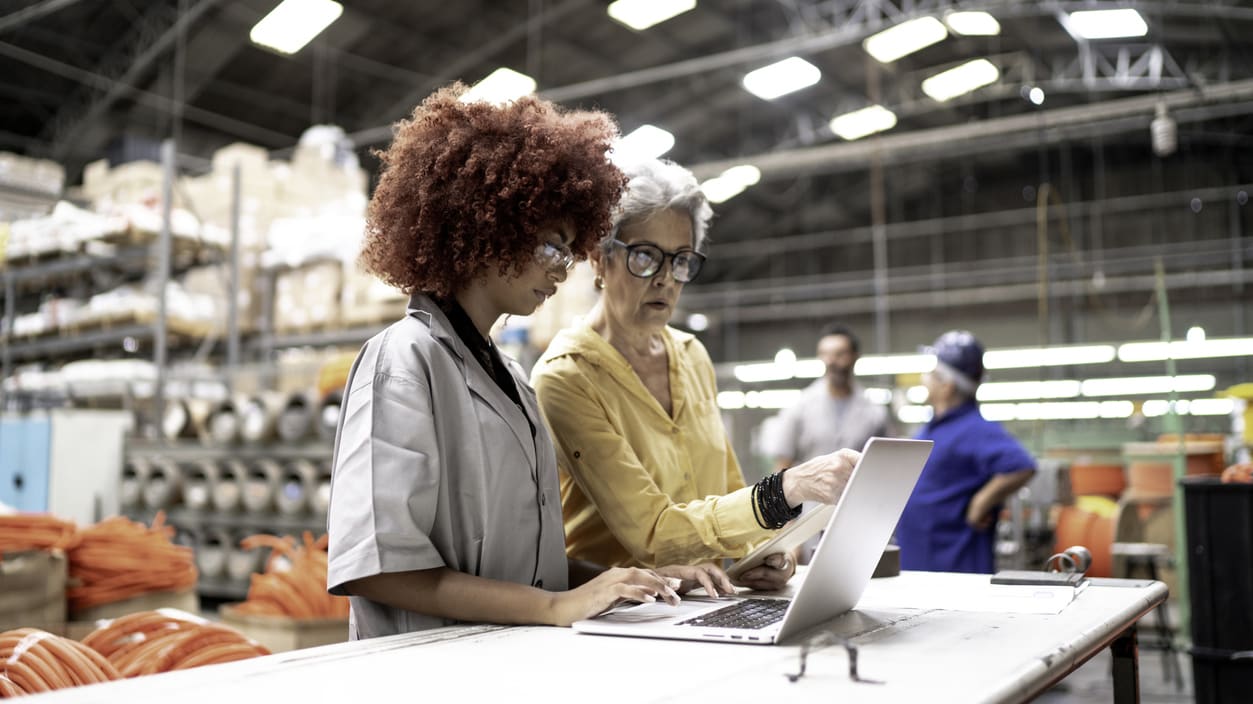As Erica Lasan sees it, tensions are growing between Baby Boomer and Generation Z workers—and conflicting perspectives on work are to blame.
Lasan, a business consultant and career coach based in New York City, explained that many older workers were brought up to believe that employment is a privilege, with the "first one in, last one out" mantra driving their work ethic and being the key to securing their next promotion.
Meanwhile, members of Generation Z, who came of professional age during the COVID-19 pandemic, tend to value work/life balance above other factors.
"In the minds of Gen Z workers, employers are lucky to have their fresh perspectives, progressive thinking and global mindset," Lasan said. "They understand that their mental and emotional states contribute to their success and ability to produce results, with the 'work to live' mentality driving their work ethic."
Older employees, which include Baby Boomers and many Generation X workers, are often left wondering why they didn't have a choice in how they engage with work like their Generation Z counterparts, who have many options when it comes to how and where they work.
Unlike the previous generations, Generation Z and younger Millennials no longer have to take on "safe" careers and can follow their passions, Lasan said. This is something older employees feel they didn't get the opportunity to do.
"Instead, these older generations sacrificed their well-being for the sake of 'success' or in order to provide for their families," she said. "Jealousy and frustration can ensue."
Why Supporting Employees of All Ages Matters
Organizations catering their workplaces to younger employees are exacerbating this tension.
Many employers are recruiting younger people with trendy office spaces, flexible work schedules and promises of generous profit sharing, despite a recent report showing that 3 in 4 managers find it difficult to work with members of Generation Z.
Lasan noted that companies view these workers as cheaper, having a longer "shelf life" and typically not having to worry about family factors such as marriage or children.
"Companies view younger workers as a better 'longer-term investment' for how long they may be able to stay and grow with the company," she said.
Despite the Age Discrimination in Employment Act protecting certain applicants and employees 40 years and older from discrimination due to their age, many older workers still experience age bias in the workplace.
Recent SHRM research revealed that nearly three-quarters of U.S. workers who have experienced unfair treatment at work due to their age said it made them feel like quitting their job. This is why hiring and catering to the needs of older workers still matters:
- About 2 in 3 Baby Boomers hold a college degree.
- They are also twice as likely as Millennials to start a business.
- Knowledge and expertise continue to increase even beyond the age of 80.
Leslie Tarnacki, SHRM-SCP, CHRO at WorkForce Software in Detroit, said companies must cater to all generations because many applicants and employees have no tolerance for any lack of diversity in the workplace.
"Organizations are facing five generations of workers in the workforce for the first time in history, each with their own strengths, challenges and motivations," she said. "Without the ability to adapt policies to the individual needs, organizations face challenges recruiting and retaining individual employees."
Ways to Support All Employees
Lasan explained that employers can increase a sense of belonging, inclusion and comradery in several ways:
- Ask for their opinions. Executive teams and people managers should regularly solicit honest feedback from their workforce, both older and younger. Lasan said meetings between staff and leadership can "open the door to greater understanding amongst all generations."
- Host team-building activities. Scheduling an offsite luncheon or team-building activities can allow employees from different ages and backgrounds to get to know one another. Do not view this as "forcing your team into liking each other," Lasan said. Look at it as a way to increase understanding and friendship among workers who may not always interact with one another.
- Leverage technology. Tarnacki said employers can focus on integrating modern, consumer-grade technology to help better support the employee experience for workers of all ages, including older workers.
When speaking to the advantages of technology in increasing workplace inclusion, Tarnacki noted that modern workforce management systems "allow employers to invest in what matters most to each individual—regardless of their age and generation—and better support them."
For example, stored employee data can be used to create more flexible shift scheduling, providing better work/life balance. Digital access to time-off requests, task management and training materials keeps workers engaged and updated no matter the roles they are performing.
"Investing in what matters to each individual can be challenging but ultimately will show employees from every generation they are valued," Tarnacki said. "It's imperative to provide an experience that empowers all talent—regardless of their age, background or any other characteristic—in order to create a truly inclusive working experience."
An organization run by AI is not a futuristic concept. Such technology is already a part of many workplaces and will continue to shape the labor market and HR. Here's how employers and employees can successfully manage generative AI and other AI-powered systems.




